Back in the early days of NR software, often times the results were worse than the original noise. Many years ago, Sound Forge introduced NR 2.0 plug-in with a big fanfare, and charged $200 for the privilege of using it. At the time, I liked it a lot. Then a few years ago, I began lurking on Zappateers.com -- after somebody told me there was a discussion about one of my master recordings -- FZ 1980 12 11 (E), partial show -- the Nakamichi recording. As a lurker, I read the thread about my recording and saw the CD I had mastered many years ago was rejected as a source for their "official shows" -- because when it was placed under spectrum analysis, one could see all sorts of frequency banding caused by the NR software.
That was a HUGE eye opener to me. I'm a perfectionist by nature, so I couldn't tolerate that type of adverse side-effect caused by the NR software. At that time in 2007, I was already in the process of remastering this same FZ 1980 12 11 show using some newer software and prepared to release it in 24/96 resolution. I was also preparing to embark on my most ambitious remastering -- a very special Stevie Wonder concert from 1983. The Stevie concert was the real gem, a concert so unique and special that I considered it a cost-no-object project. (It ended up being that way too: $2000+ in new software/hardware and 300+ hours behind the computer remastering the show.)
The time was perfect to look for new NR software -- and it turned out that I was in the right place at the right time. I don't remember how I made the discovery, but I found that iZotope had just released a new product called RX -- Noise Reduction software. I had never heard of iZotope before this, but I was intrigued by their description of the product. They claimed they threw away all of the old school assumptions of how NR software should work, sat in a room for a year, and invented a completely new and unique way of approaching NR. Believe it or not, that's exactly what I was looking for -- throw away the old school, and start from scratch with a new book. For the first 30 days, they ran an introductory special price offering standard RX for $200 instead of the $350 MSRP. Also of interest was RX-Advanced, a $1200 version of the same software -- albeit with more knobs exposed for the user to tweak, plus ground breaking algorithms for downsample and dither (these two features are not available in standard RX).
For $200, I figured I didn't have anything to lose so I bought it. First trial: I was absolutely amazed. The noise reduction capabilities exceeded my wildest imagination -- and best of all, it didn't cause any frequency banding! I liked it so much, I wanted to purchase the full RX-Advanced version -- but there was one problem: they didn't offer an introductory discount -- they wanted the full $1200. I tried, and tried, and tried (even got in an argument with them) about offering an introductory UPGRADE to people who had just purchased RX. They offered me a $200 credit, but they weren't budging at all on lowering the price. But in the mean time, and in midst of arguming with them, I was finding bugs in their UI, reporting them, telling them how to reproduce it, and even making very solid suggestions how to make it better. They ended up liking my ideas so much, they made me a beta tester, and gave me a free upgrade license to RX-Advanced!
I know how many of you feel about noise reduction. But I'm here to tell you a new era of noise reduction has been born. So to prove this, today I took an 8-minute section of one of my shows and did a before/after FA and SA comparison.
Here's a spectrum analysis and frequency analysis of the original source material:
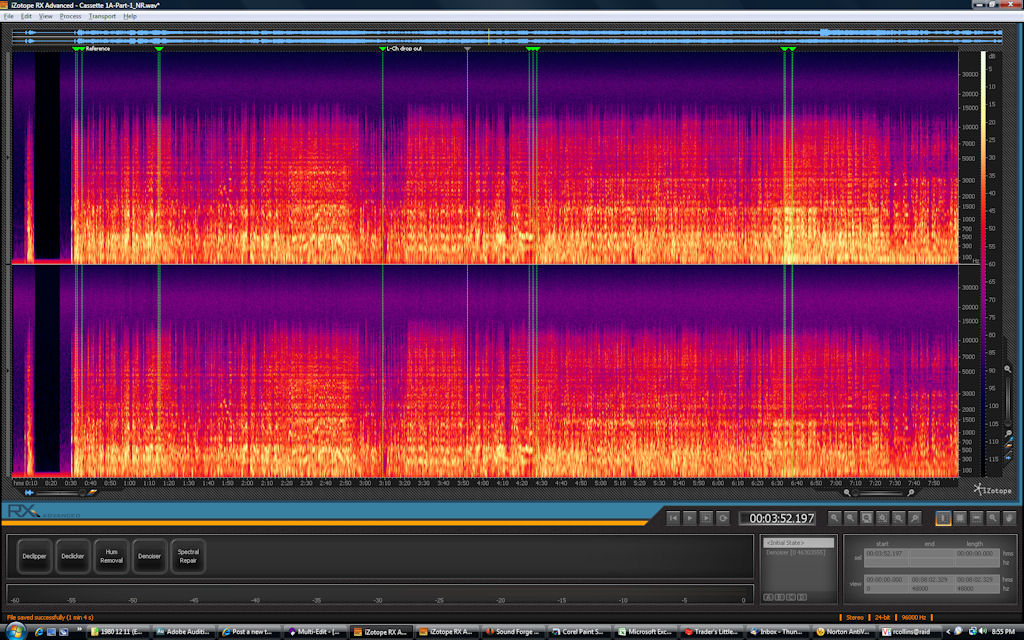
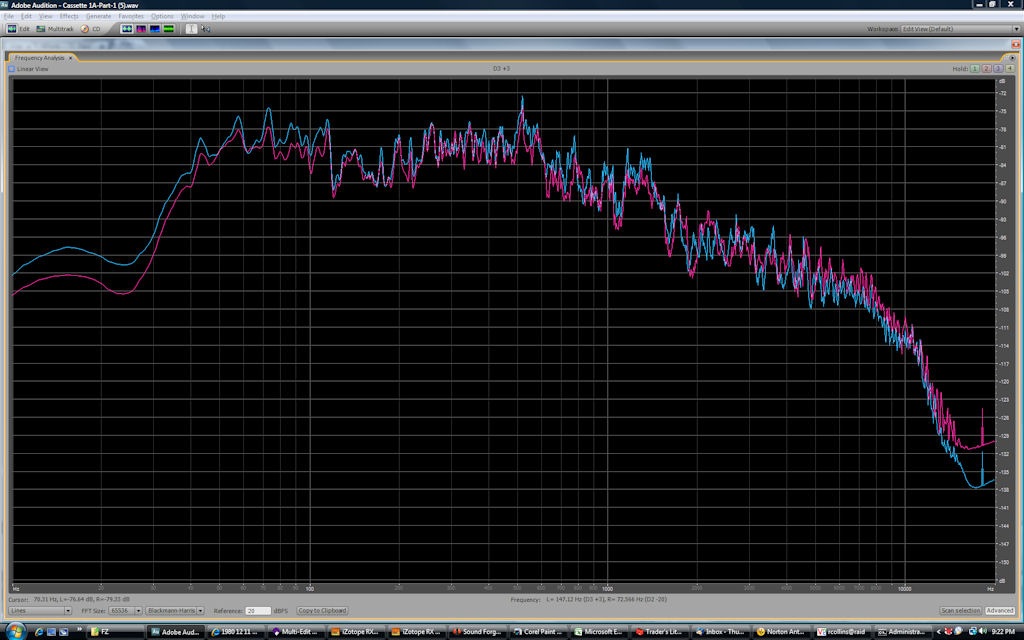
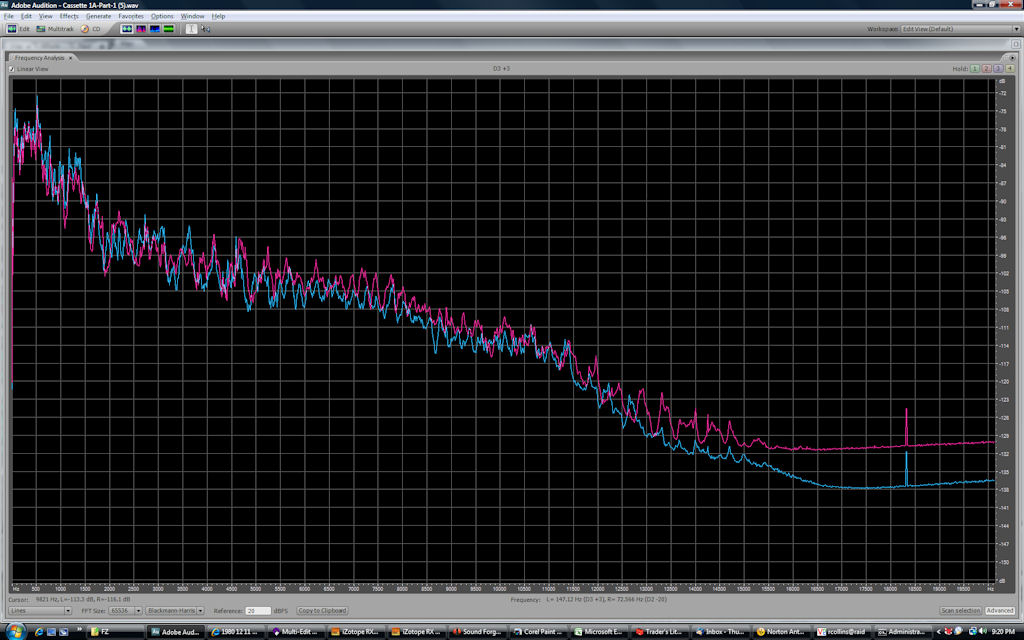
Using RX-Advanced, I imported a sample of my noise print. The noiseprint was taken from the section of tape during Easy Meat -- the section I had accidentally erased 20+ years ago. Then using the following settings, I applied the noise reduction. To see the difference between RX ($350) and RX-Advanced ($1200), the knobs appearing below "Less<<<" are only available on RX-Advanced. I came upon these settings by studying the manual, and significant experimentation. More than 95% of all of my uses, involve these exact settings. Only in the most extreme cases am I forced to change these settings to something else.
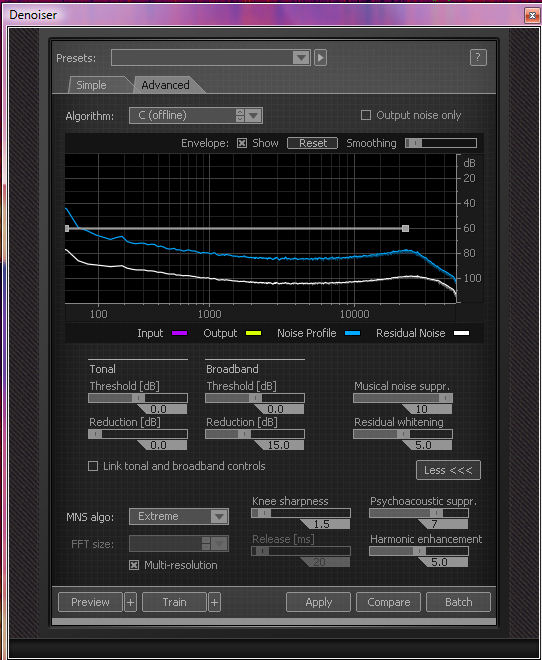
Now let's look at those same images after running the noise reduction:
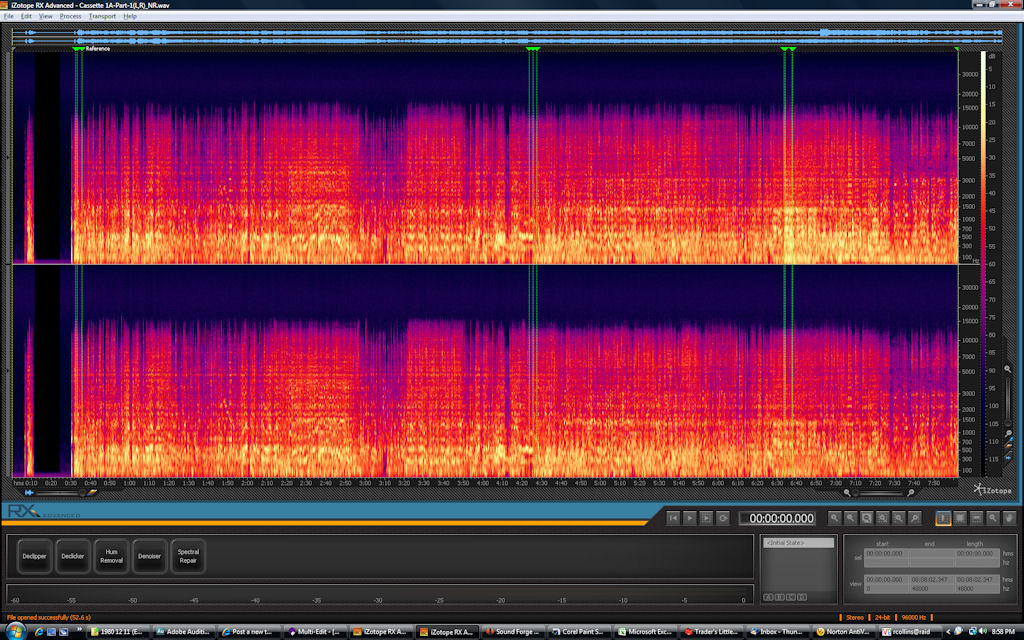
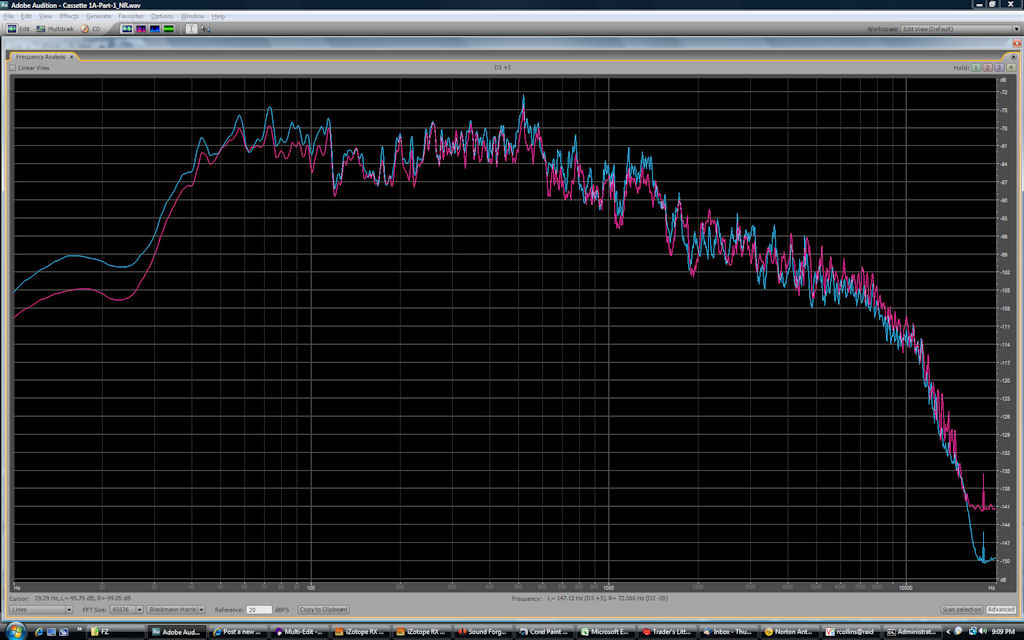
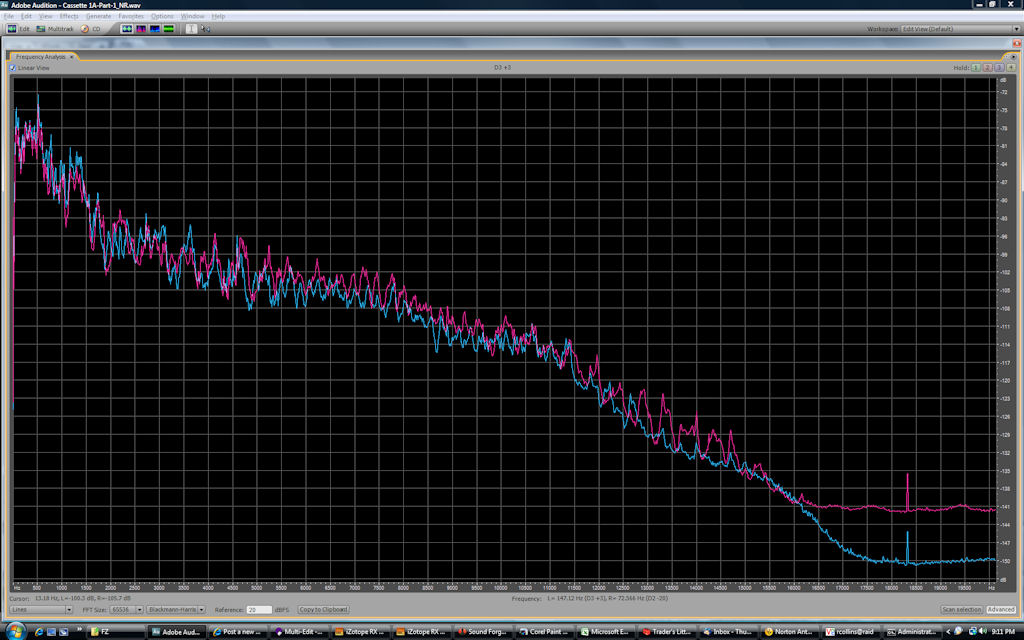
You can see from the spectrum analysis that the noise is completely gone, and RX didn't create any banding whatsoever. So as the final test, let's compare the Frequency Analysis. The best way to make the comparison is to capture both images in an image editor. Let's assume you've opened one of the "RAW" (pre-NR) graph. Using an image editor, only select the graph and "copy" it. Open the same NR graph, and paste the selection right over the existing graph. Then using the UNDO and REDO buttons on your image editor, see how the graphs have NOT changed -- except for the noise itself. The noise floor is lower, but the frequencies and their relative amplitude are all still completely intact.
In this demonstration, I hope I put to rest the notion that all NR software can't be trusted. The images I presented above demonstrated that NR is possible without banding or other damaging side-effects.
While I'm talking about RX-Advanced, I wanted to mention some of the other features as well. The spectrum repair is basically useless for live recordings. By contrast, I do use the spectrum editor with great effect to remove coughs, chair noise, microphone muffling, tape drop-outs, etc. The hum removal feature can be very useful, but very few recordings actually have hum on them (caused by the instruments, not my equipment). The only other feature worth mention, is the downsample and dither capabilities. Downsample and Dither are features only available on RX-Advanced -- the $1200 product. According to these two white papers, iZotope believes they've come up with a substantial advancement in downsample and dither as well.
http://www.izotope.com/tech/src/
http://www.izotope.com/tech/mbit/
A valuable guide to determine if that claim is true, is the following test lab site:
http://src.infinitewave.ca/. If you compare the iZotope downsample and dither results to all of the others, you will see they are in a class of software that is so good, only one or two others even come close. Based on this web site, I'd say that these algorithms are in the top-5 best downsample and dither algorithems. And when you compare the top-5 to all others, you'll understand what I mean when I say they're in a class of their own.
The reason I mentioned this advanced downsample and dither -- wasn't to encourage a group buy of $1200 software. On the contrary. The new Sound Forge Pro 10.0, licensed these algorithms from iZotope, and they are now part of Sound Forge!
No members have liked this post.